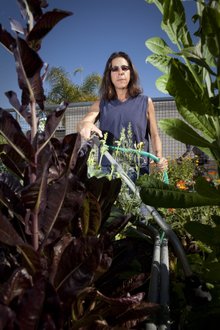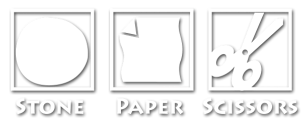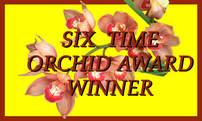
All for art, and art for all North Park’s Lynn Susholtz has dedicated her life to community-based creativity
By James Chute
Like many artists, Lynn Susholtz engages in an “art practice” that includes painting, sculpture and installation. Like some artists, Susholtz also operates a gallery and curates exhibitions of the work of other artists.
But there are few other artists whose art practice also includes public art, education, community activism, and communal gardening, cooking, design and performance, to name a few entries on her seemingly endless list of art-related ventures.
“It’s all part of an experiment in community-based art,” said Susholtz, whose University Avenue studio was the starting point in last month’s tour of North Park by visiting members of Americans for the Arts, the leading national arts advocacy organization.
By James Chute
Like many artists, Lynn Susholtz engages in an “art practice” that includes painting, sculpture and installation. Like some artists, Susholtz also operates a gallery and curates exhibitions of the work of other artists.
But there are few other artists whose art practice also includes public art, education, community activism, and communal gardening, cooking, design and performance, to name a few entries on her seemingly endless list of art-related ventures.
“It’s all part of an experiment in community-based art,” said Susholtz, whose University Avenue studio was the starting point in last month’s tour of North Park by visiting members of Americans for the Arts, the leading national arts advocacy organization.
Her art and design studio, Stone Paper Scissors, has been involved in numerous public art projects at San Diego schools, parks and community centers over the past two decades, earning four “Orchid Awards” from the San Diego chapter of the American Institute of Architects.
Her adjacent gallery, Art Produce (which received one of the Orchid Awards), has provided an exhibition space for artists ranging from University of California San Diego graduate students to street artists. Last year, it expanded into an outdoor community garden, gathering and performance space behind her studio, where locals gather Thursday afternoons (and other times) for all-ages “make it yourself” classes, with topics ranging from salad dressing to ceramics.
“It’s astounding to me how people are drawn to engagement,” Susholtz said during a recent conversation at Cafe Calabria, a bustling North Park coffee shop that sometimes doubles as her office. “People want to engage in making things. Even nonartists like to make things.
“And there’s something that happens when people work together to make something, whether they are making artwork or ice cream. People want to participate, and it’s not so much the product they are interested in as the process of engaging with the community and having a sense of public culture and public discourse.”
Even by artist standards, Susholtz doesn’t have the usual linear résumé. She never finished high school, but she appreciates the irony in the fact that she is co-author of a recent book on arts education, “Object Lessons: Teaching Math Through the Visual Arts, K-5.”
Her primary education came through her mother, who worked at Houston’s Contemporary Art Museum (then the Contemporary Art Association), where Susholtz visited after (and perhaps during) class.
“I could come to the museum and hang around with artists and preparators and my mother’s friends,” she said. “We were able to go to events and behind-the-scenes installations for some pretty phenomenal artists who were brought to Houston by the Ménil family (prominent art patrons). It was a better education than any of the academic training I received.”
She studied metallurgy at a vocational school, spent a year making sculpture at the Aegean Center of Fine Arts in Greece, and attended Antioch College, where she finally graduated.
After working in Kansas (“10 months of a bad dream”) and Northern California, she moved to San Diego in 1978 “for an art therapy program that didn’t exist.” Instead, she earned a teaching certificate and worked in various arts education programs, from the Navy to UCSD to the California Arts Council (for a residency in the Carlsbad and Oceanside schools).
An opportunity to teach homeless kids, taggers and gang members with a program sponsored by San Diego Youth and Community Services changed her focus to downtown and prompted her to buy an old Craftsman house in North Park in 1990.
“That house really did change my life,” she said. “I had lived in the suburbs my whole life, one after another. Then moving into this house, in this neighborhood, with the big front porches and the garages in the back, and the whole aesthetic of the Craftsman style and how it related to people rather than the automobile, it really worked.”
She became involved not only with her neighbors, among them San Diego State University design professor and historian Donald Covington and his wife Karon, but with other community activists who in the early 1990s started the slow push toward the revitalization of North Park.
“There was a group of designers and architects I met through an association called California Women in Environmental Design, and we started working on projects,” she said. “We started using North Park as a sort of laboratory to look at what kinds of environmental changes could happen to stimulate interest and vitality for pedestrians and for the neighborhood.”
In partnership with Gwen Gomez, and later with Aida Mancillas, Susholtz started the enterprise that would become Stone Paper Scissors in order to bid on, design and execute public, art-related projects in North Park and beyond.
“I always loved the name Stone Paper Scissors, with its references to sculpture and art and games and kids and education and fun,” she said. “And it makes people ask, ‘What the hell do we do?’ ”
Mancillas and Gomez (now at the San Diego Museum of Art) left the partnership soon before Susholtz moved the company into its own building on University Avenue, the boarded-up former home of North Park Produce. She gutted the building and located the gallery behind the large front window, in view of anybody passing by.
“I wanted to open it up to the neighborhood,” she said. “I wanted to see what kind of artists and what kind of art would really prompt an interaction with real folks, with everyday people.”
Her success — and her involvement in numerous community projects — has contributed toward North Park’s emergence as an arts center, and with it the growing pains that come as bars, restaurants and other businesses cash in on the neighborhood’s hard-earned cachet.
“There are a lot of us concerned about gentrification and us not being able to sustain our local artists, studios and galleries,” Susholtz said. “My feeling is, a lot of that happens because a lot of artists just replicate the typical (gallery) business model. That doesn’t necessarily work.
“I’ve been able to sustain what I do, but there’s not a lot of business models to follow. I’m making it up as I go, as I always have.”
Read the article online at SignOnSanDiego.com.
Her adjacent gallery, Art Produce (which received one of the Orchid Awards), has provided an exhibition space for artists ranging from University of California San Diego graduate students to street artists. Last year, it expanded into an outdoor community garden, gathering and performance space behind her studio, where locals gather Thursday afternoons (and other times) for all-ages “make it yourself” classes, with topics ranging from salad dressing to ceramics.
“It’s astounding to me how people are drawn to engagement,” Susholtz said during a recent conversation at Cafe Calabria, a bustling North Park coffee shop that sometimes doubles as her office. “People want to engage in making things. Even nonartists like to make things.
“And there’s something that happens when people work together to make something, whether they are making artwork or ice cream. People want to participate, and it’s not so much the product they are interested in as the process of engaging with the community and having a sense of public culture and public discourse.”
Even by artist standards, Susholtz doesn’t have the usual linear résumé. She never finished high school, but she appreciates the irony in the fact that she is co-author of a recent book on arts education, “Object Lessons: Teaching Math Through the Visual Arts, K-5.”
Her primary education came through her mother, who worked at Houston’s Contemporary Art Museum (then the Contemporary Art Association), where Susholtz visited after (and perhaps during) class.
“I could come to the museum and hang around with artists and preparators and my mother’s friends,” she said. “We were able to go to events and behind-the-scenes installations for some pretty phenomenal artists who were brought to Houston by the Ménil family (prominent art patrons). It was a better education than any of the academic training I received.”
She studied metallurgy at a vocational school, spent a year making sculpture at the Aegean Center of Fine Arts in Greece, and attended Antioch College, where she finally graduated.
After working in Kansas (“10 months of a bad dream”) and Northern California, she moved to San Diego in 1978 “for an art therapy program that didn’t exist.” Instead, she earned a teaching certificate and worked in various arts education programs, from the Navy to UCSD to the California Arts Council (for a residency in the Carlsbad and Oceanside schools).
An opportunity to teach homeless kids, taggers and gang members with a program sponsored by San Diego Youth and Community Services changed her focus to downtown and prompted her to buy an old Craftsman house in North Park in 1990.
“That house really did change my life,” she said. “I had lived in the suburbs my whole life, one after another. Then moving into this house, in this neighborhood, with the big front porches and the garages in the back, and the whole aesthetic of the Craftsman style and how it related to people rather than the automobile, it really worked.”
She became involved not only with her neighbors, among them San Diego State University design professor and historian Donald Covington and his wife Karon, but with other community activists who in the early 1990s started the slow push toward the revitalization of North Park.
“There was a group of designers and architects I met through an association called California Women in Environmental Design, and we started working on projects,” she said. “We started using North Park as a sort of laboratory to look at what kinds of environmental changes could happen to stimulate interest and vitality for pedestrians and for the neighborhood.”
In partnership with Gwen Gomez, and later with Aida Mancillas, Susholtz started the enterprise that would become Stone Paper Scissors in order to bid on, design and execute public, art-related projects in North Park and beyond.
“I always loved the name Stone Paper Scissors, with its references to sculpture and art and games and kids and education and fun,” she said. “And it makes people ask, ‘What the hell do we do?’ ”
Mancillas and Gomez (now at the San Diego Museum of Art) left the partnership soon before Susholtz moved the company into its own building on University Avenue, the boarded-up former home of North Park Produce. She gutted the building and located the gallery behind the large front window, in view of anybody passing by.
“I wanted to open it up to the neighborhood,” she said. “I wanted to see what kind of artists and what kind of art would really prompt an interaction with real folks, with everyday people.”
Her success — and her involvement in numerous community projects — has contributed toward North Park’s emergence as an arts center, and with it the growing pains that come as bars, restaurants and other businesses cash in on the neighborhood’s hard-earned cachet.
“There are a lot of us concerned about gentrification and us not being able to sustain our local artists, studios and galleries,” Susholtz said. “My feeling is, a lot of that happens because a lot of artists just replicate the typical (gallery) business model. That doesn’t necessarily work.
“I’ve been able to sustain what I do, but there’s not a lot of business models to follow. I’m making it up as I go, as I always have.”
Read the article online at SignOnSanDiego.com.

 RSS Feed
RSS Feed
